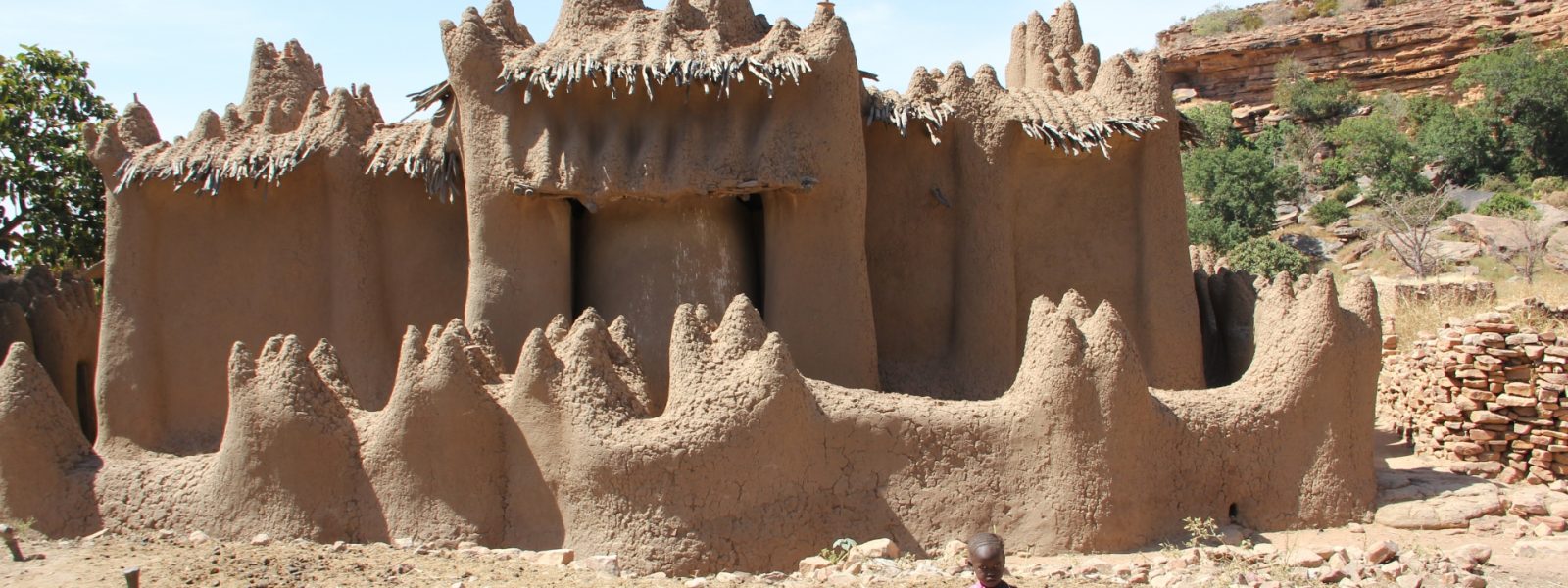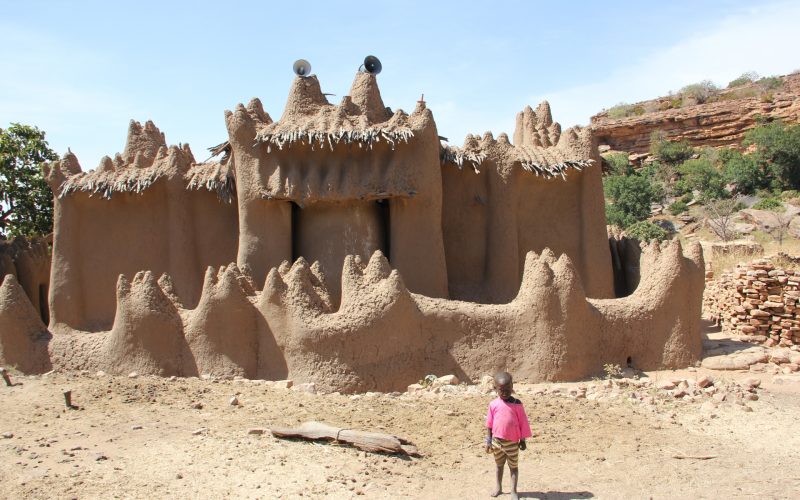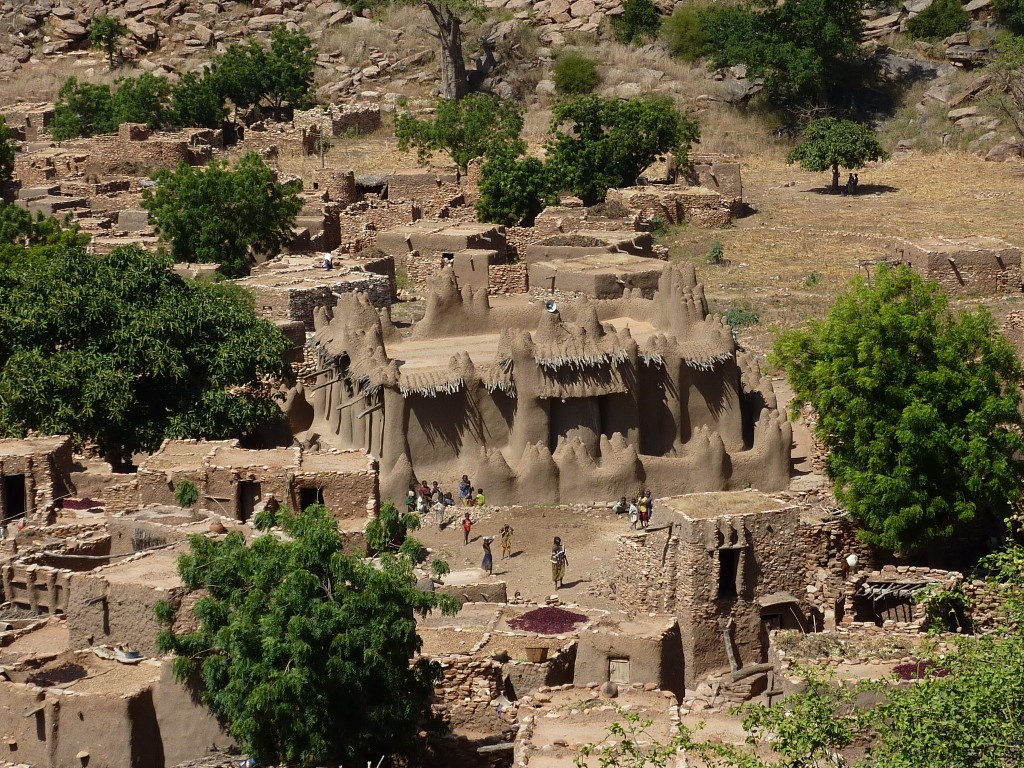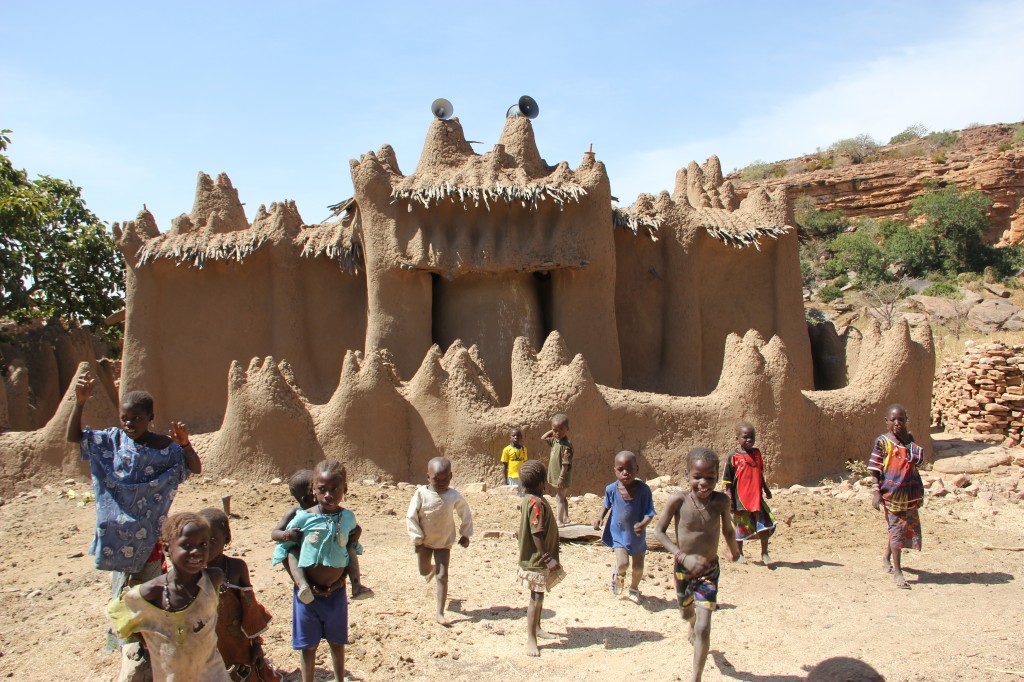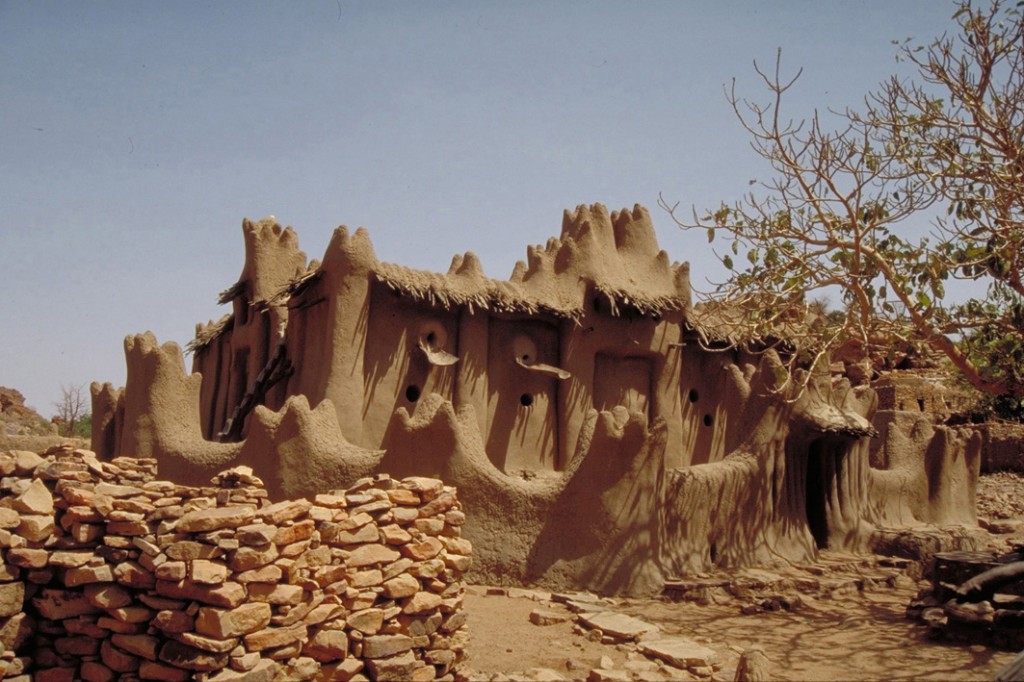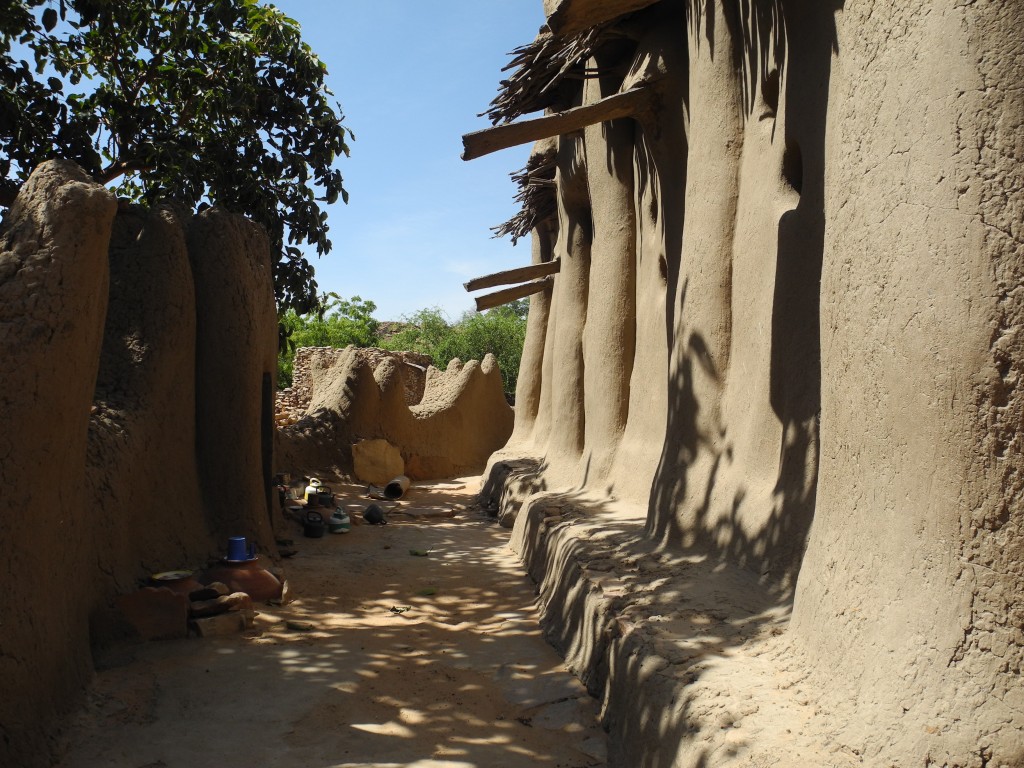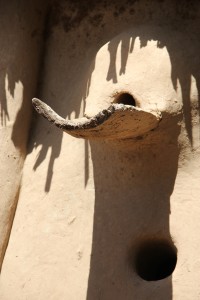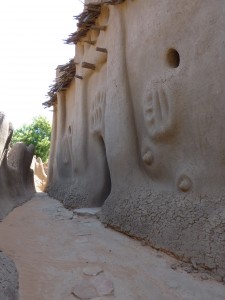Although its spread goes back to the 11th century, Islam was more or less limited to urban centres such as Djenne, Dia, Timbuktu and Gao. It was the faith of the elite in power and of the trading community. It is only after a series of holy wars in the 19th century that Islam definitely took root in rural zones and in Dogon country. Most villages have a mosque. Today’s dynamism of traditional mud constructions manifests itself, among others, in a variety of mosques that show stylistic features that are characteristic for Dogon architecture. Mosques with façades composed of niches with checkerboard and triangular patterns became a familiar sight. The mosque of Kani Kombole is a good example. It is situated at the foot of the escarpment. There is ample space for building.
The mosque is wide and its four sides are decorated with colonnades and niches. This is a clear reference to the façade of the Ginna namely, the traditional house of the extended family.
The mosque of Nando is different from any other of its kind. It is believed it was built in the 12th century. Or at least its foundation predates the building of the Djenne and Timbuktu mosques. In those early days the Bandiagara escarpment was inhabited by populations known as « Tellem ». Today, many questions remain unanswered as to the circumstances of its construction.
Legends give various accounts of its origin. One story goes that it fell 15 from the skies and another mentions a giant who built the mosque within a week. Still another legend has it that in those ancient times the region was often prey to violence. One day Nando was left abandoned until a `marabout` and his students took up residence there and built the mosque. With the return of peace, the villagers came back and drove the marabous away but they kept the mosque. What all these stories have in common is the sudden appearance of a mosque that precedes the spread of the Muslim faith in the region. It looks as though it came as a revelation. In the 12th century, the only town nearby already converted to Islam was Dia on the Diaka (arm of the Niger river).
The mosque of Nando is built out of earth, wood and stone. The latter is the favourite building material in Dogon country. Whereas villages along the river are made of mud, houses and mosques on the plateau and in the cliff area combine stone with earth. And yet the mosque of Nando is unique by its architecture. Pilasters are incorporated into all four sides of the façade and the edges of its roof terrace are surmounted by multi¬ple head pinnacles. A low wall of similar style, with arched entrances and pointed pinnacles, surrounds the build¬ing. After many seasonal mud-plastering (skimming), the mosque has taken up the appearance of an edifice that has un¬dergone Muslim and animist influences. Its in¬ner walls are Islamic in design and are decorated with themes from the Koran. One can see a pair of scales that are believed to be weighing the souls of the dead so as to determine who will go to heaven or hell.

